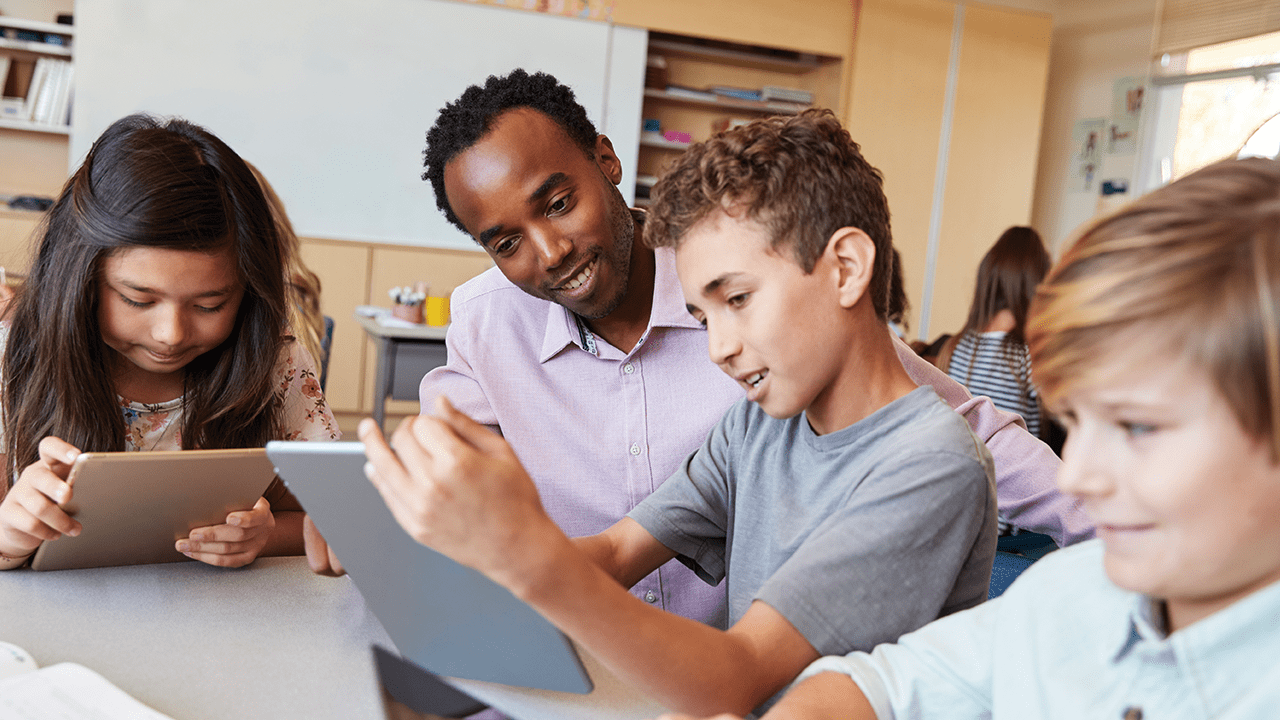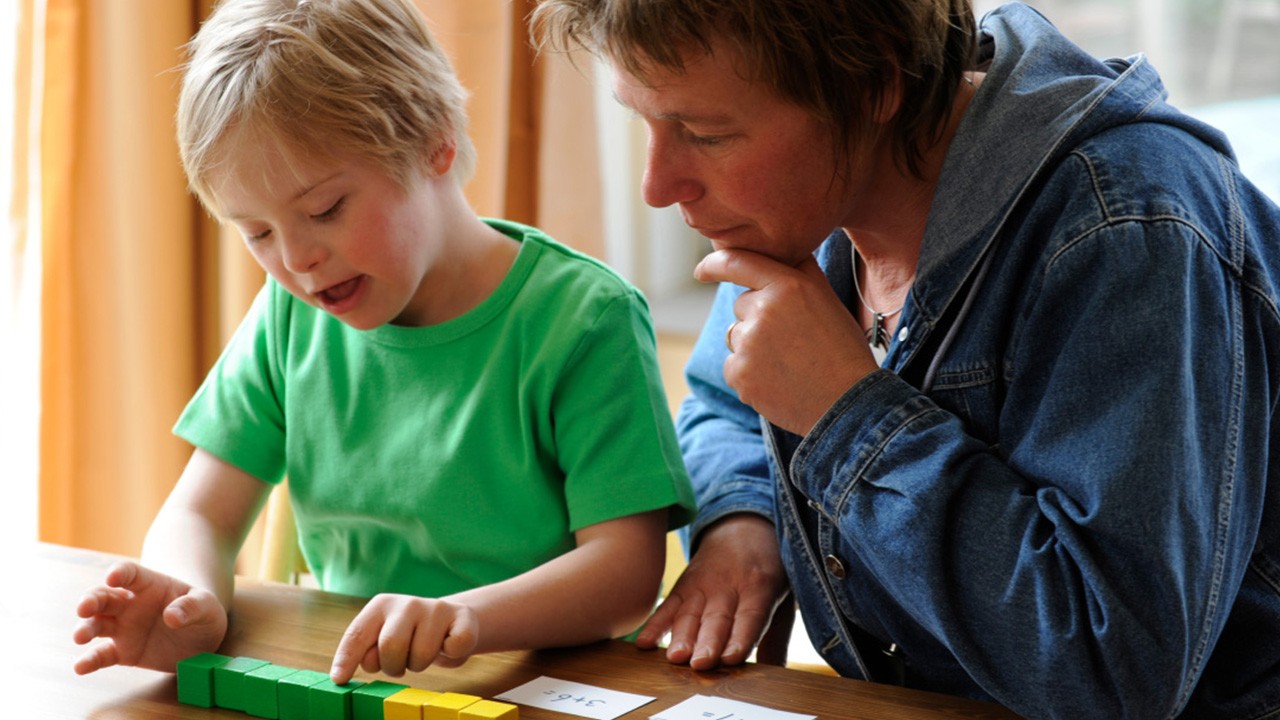In contrast, during remote learning a child’s school day may include blocks of time for reading and recess, but there are significant barriers to accessing direct instruction and therapies compared to the controlled school environment. Certified staff are not always readily available for consults and questions. Standardized curriculum often becomes overwhelming when differentiation or modifications are needed in the moment to assist the child in accessing the information.
With the switch to remote learning (or hybrid), educators and families must work together as a collaborative team to ensure that a child is still receiving an appropriate education. This includes focusing on the long-term outcome of preparing each one for further education, employment, and independent living. Although a remote-learning day will look very different from the plan created at the IEP table for in-person learning, you have the ability to provide an effective educational experience that makes long-term goals achievable.
Refocusing during remote learning will help both schools and families become confident that this will happen, despite the changes in location and delivery of the student’s education.
3 Ways to Refocus for Long-Term IEP Goal Achievement
1. Establish priorities
To ensure an appropriate education is being provided during remote learning, it is critical for the school and home teams to prioritize what needs to happen daily, weekly, and monthly. This will look very different from a daily or weekly traditional school schedule. Creating an IEP goal priority plan for remote learning will help the child’s entire IEP team focus on positive desired outcomes, even on tough days.
Classroom priority example
Inside of a classroom, a student typically has a big demand placed upon them: staying on task during extended direct instruction. During direct instruction, whether group or one to one, we are often tracking how long a child stays engaged, how many prompts are used, and what supports are being provided. This can be a very complicated process during remote learning for both home and school teams.
Remote learning priority example
During remote learning, a child often has a significant amount of downtime without direct instruction from a parent or support person. Although supervised, they are expected to become more independent. The opportunities to teach independent play or complete tasks with minimal prompts are far greater at home than in the classroom. At home, we are often not bound to a schedule that immediately requires moving on to the next class or therapy session. We can follow the child’s lead and stay engaged in a task beyond the scheduled time or end early if frustration is setting in. Taking advantage of this flexibility and deciding as a collective team to prioritize independent work versus tracking time on task during direct instruction is an effective way to flip priorities during remote learning.
2. Expand expectations
Limiting remote learning to a plan that is causing extreme stress for students, parents, or school teams is not a sustainable approach. Knowing when to expand the focus of remote learning without lowering the expectations of achieving long-term goals is critical. The IEP team needs to be acutely aware of what is and is not working for a child within standard IEP expectations, so adjustments can be made quickly.
Classroom goal example
During school days, a child may be working toward reading sight words according to the standardized reading curriculum used in the classroom. The quarterly goal is set at 25 new words, and as a team, you are confident that in a classroom the student could achieve this goal with over 90% accuracy and minimal prompting.
Remote learning goal adaptation
Learning 25 new words from the standardized curriculum may remain a long-term goal; however, widening the focus of the child’s vocabulary during this remote learning period may be extremely beneficial. For example, reading words to follow recipes for independence at home or adjusting the word list to complement materials of a sibling who is also on a remote learning plan can be helpful. Being able to integrate IEP goals into daily routines and include additional family members for modeling or support can create many successful moments throughout the day.
As a member of the home or school team, you will need to track data of what words have been attempted in the standardized goal and also what vocabulary has been added to enhance the student’s home education. With clear documentation, this extension of learning will show your overall success working together remotely as an IEP team and keeping the student first in all decisions.
3. Evaluate progress
As an IEP team, you’ve all worked hard to create a comprehensive and compliant document to support the child in reaching their potential. During remote learning you must continue to have ambitious expectations of progress. It is important to decide how you will use remote learning opportunities to maintain a student’s baseline skills, achieve new milestones, and document the progress.
Standard classroom progress documentation
Documenting IEP goal progress within the classroom setting can be a very standardized process. Tally marks, logs of observations, and work samples are simple to collect. A school team can almost immediately see when a child is struggling before a downward spiral occurs. When they see old patterns emerging or progress on skills stopping, they can adjust, brainstorm, and dip into resources that are available throughout the district.
Remote learning progress documentation
Collecting data during remote learning requires creativity and clear communication throughout the home and school teams. Utilizing new tools such as video or audio recording, downloading new data collection apps, or creating a new log of observation collection form for parents may be helpful. Informal meetings by phone or video for parents and staff can also be very helpful to troubleshoot and document what is and is not happening in a child’s day. The key to documenting progress during remote learning is to focus on facts, not feelings.
Wrap Up
Collaborating effectively during remote learning to establish priorities, expand expectations, and evaluate progress can bring a new sense of teamwork and confidence to your IEP team. Whether you’re part of the home or school team, you’ll have more effective tools and strategies for when it’s time for students to return to the classroom.
When you sit down at the IEP table next time, whether virtually or in person, you’re going to know with certainty what supports and skills a student needs both inside and outside of the classroom. You’ll have insights that you’ve never had in the past to help you design a program that promotes their success for the future. Remote learning for most students is temporary, so they will be returning to the classroom, but this experience can absolutely have a positive long-term outcome if everyone works together.



